Appearance Colorless gas Formula C4H10 Molar mass 58.12 g/mol Density 2.48 kg/m³ Classification Alkane | Related compounds Boiling point -1 °C IUPAC ID Butane Melting point -140 °C | |
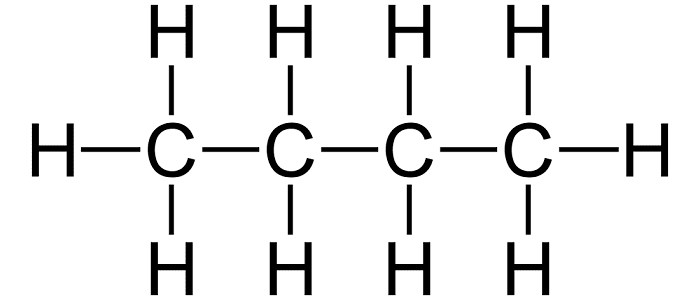 | ||
Related alkanes Thermodynamic
data Phase behaviour
solid–liquid–gas | ||
Butane (/ˈbjuːteɪn/) is an organic compound with the formula C4H10 that is an alkane with four carbon atoms. Butane is a gas at room temperature and atmospheric pressure. The term may refer to either of two structural isomers, n-butane or isobutane (also called "methylpropane"), or to a mixture of these isomers. In the IUPAC nomenclature, however, "butane" refers only to the n-butane isomer (which is the isomer with the unbranched structure). Butanes are highly flammable, colorless, easily liquefied gases. The name butane comes from the roots but- (from butyric acid, named after the Greek word for butter) and -ane.
Contents

Isobutane vs butane chemistry lessons
Isomers
Rotation about the central C−C bond produces two different conformations (trans and gauche) for n-butane.
Reactions
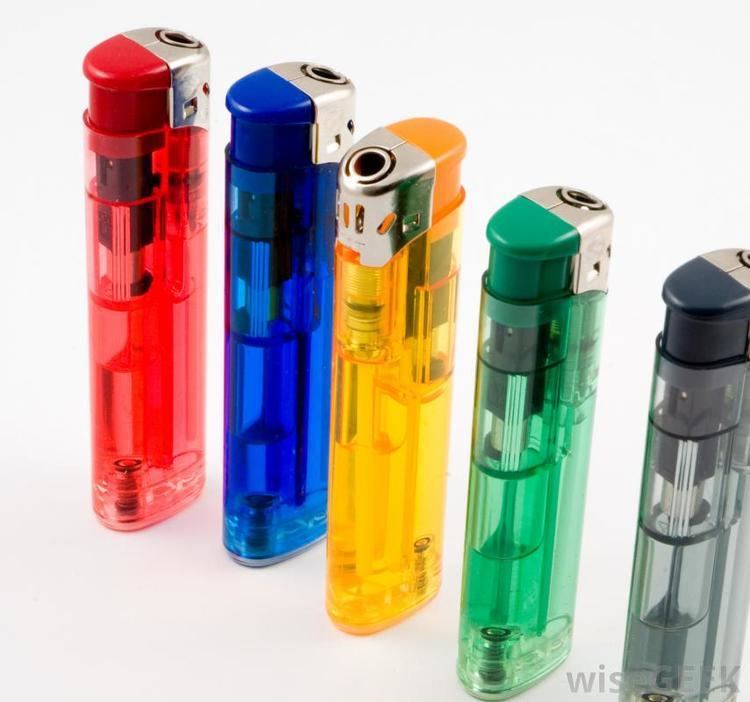
When oxygen is plentiful, butane burns to form carbon dioxide and water vapor; when oxygen is limited, carbon (soot) or carbon monoxide may also be formed.
When there is sufficient oxygen:
2 C4H10 + 13 O2 → 8 CO2 + 10 H2OWhen oxygen is limited:
2 C4H10 + 9 O2 → 8 CO + 10 H2OThe maximum adiabatic flame temperature of butane with air is 2,243 K (1,970 °C; 3,578 °F).
n-Butane is the feedstock for DuPont's catalytic process for the preparation of maleic anhydride:
2 CH3CH2CH2CH3 + 7 O2 → 2 C2H2(CO)2O + 8 H2O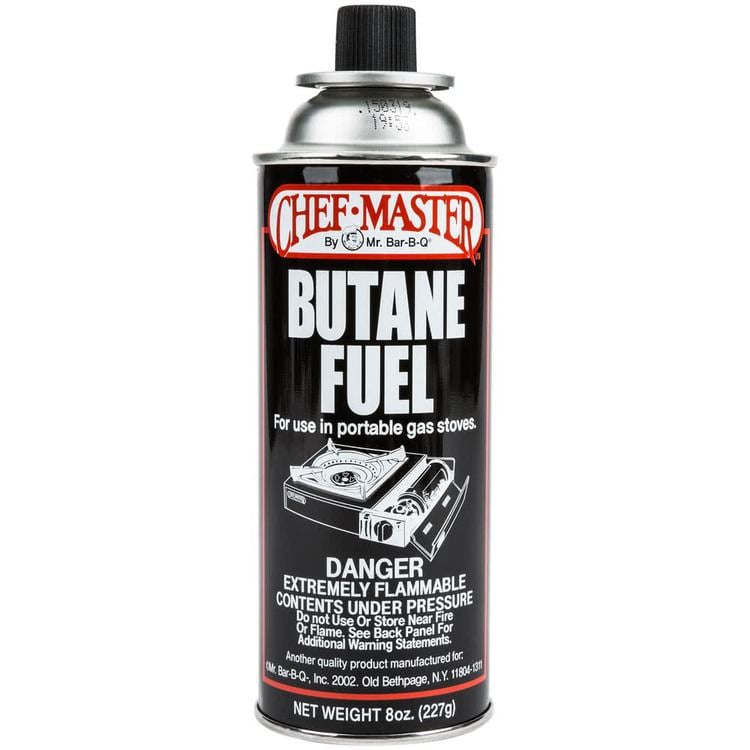
n-Butane, like all hydrocarbons, undergoes free radical chlorination providing both 1-chloro- and 2-chlorobutanes, as well as more highly chlorinated derivatives. The relative rates of the chlorination is partially explained by the differing bond dissociation energies, 425 and 411 kJ/mol for the two types of C-H bonds.
Uses

Normal butane can be used for gasoline blending, as a fuel gas, either alone or in a mixture with propane, and as a feedstock for the manufacture of ethylene and butadiene, a key ingredient of synthetic rubber. Isobutane is primarily used by refineries to enhance (increase) the octane number of motor gasoline.
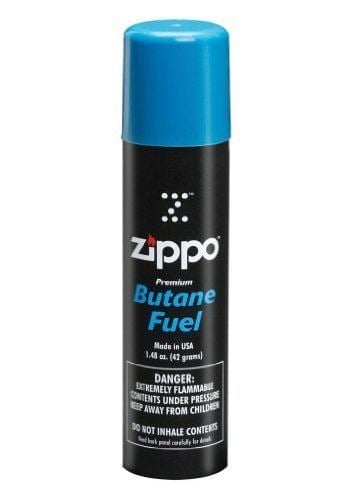
When blended with propane and other hydrocarbons, it may be referred to commercially as LPG, for liquefied petroleum gas. It is used as a petrol component, as a feedstock for the production of base petrochemicals in steam cracking, as fuel for cigarette lighters and as a propellant in aerosol sprays such as deodorants.
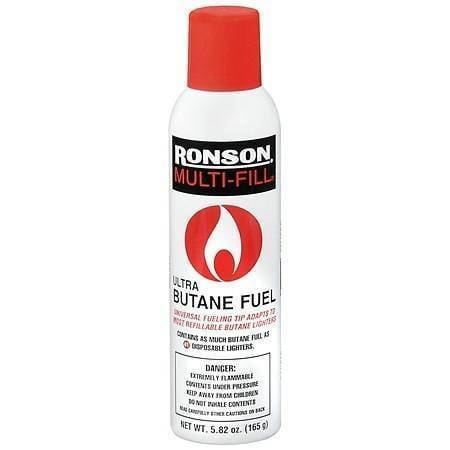
Very pure forms of butane, especially isobutane, can be used as refrigerants and have largely replaced the ozone-layer-depleting halomethanes, for instance in household refrigerators and freezers. The system operating pressure for butane is lower than for the halomethanes, such as R-12, so R-12 systems such as in automotive air conditioning systems, when converted to pure butane will not function optimally and therefor a mix of Isobutane and Propane is used to give cooling system performance comparable to R-12.
Butane is also used as lighter fuel for a common lighter or butane torch and is sold bottled as a fuel for cooking and camping stoves. Butane canisters are almost exclusively manufactured in South Korea with the only exception being one manufacturer in Houston, Texas. Butane canisters manufactured in South Korea contain butane from Saudi Arabia, while the American manufacturer fills canisters with domestic butane.
In this form it is often mixed with small amounts of hydrogen sulfide and mercaptans which will give the unburned gas an offensive smell easily detected by the human nose. In this way, butane leaks can easily be identified. While hydrogen sulfide and mercaptans are toxic, they are present in levels so low that suffocation and fire hazard by the butane becomes a concern far before toxicity. Most commercially available butane also contains a certain amount of contaminant oil which can be removed through filtration but which will otherwise leave a deposit at the point of ignition and may eventually block the uniform flow of gas.
Cordless hair irons are usually powered by butane cartridges.
Effects and health issues
Inhalation of butane can cause euphoria, drowsiness, narcosis, asphyxia, cardiac arrhythmia, fluctuations in blood pressure and temporary memory loss, when abused directly from a highly pressurized container, and can result in death from asphyxiation and ventricular fibrillation. It enters the blood supply and within seconds produce intoxication. Butane is the most commonly misused volatile substance in the UK, and was the cause of 52% of solvent related deaths in 2000. By spraying butane directly into the throat, the jet of fluid can cool rapidly to −20 °C (−4 °F) by expansion, causing prolonged laryngospasm. "Sudden sniffer's death" syndrome, first described by Bass in 1970, is the most common single cause of solvent related death, resulting in 55% of known fatal cases.
A small amount of nitrogen dioxide, a toxic gas, results from burning butane gas, along with any combustion in the earth's atmosphere, and represents a human health hazard from home heaters and stoves.
